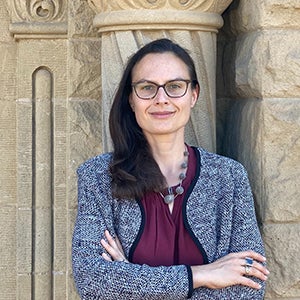Water and Sound in Islamic Architecture
Patricia Blessing
Synopsis:
This talk examines the presence and meaning of sound and water in pre-modern Islamic architecture. Examples include palaces, religious spaces, and a hospital to present a diverse picture of the ways in which water is present within architecture and human-made landscapes. The sound of water emerges as a major aspect in shaping the sensory experience of these spaces.
References:
Blessing, Patricia. “The Vessel as Garden: The ‘Alhambra Vases’ and Sensory Perception in Nasrid Architecture,” in: Sensory Reflections: Traces of Experience in Medieval Artifacts, ed. Fiona Griffiths and Kathryn Starkey (Berlin: De Gruyter, 2018), 116-141. ![]()
Ergin, Nina. “The Soundscape of Sixteenth-Century Istanbul Mosques: Architecture and Qur’an Recital,” JSAH 67, no. 2 (June 2008): 204–221. ![]()
Frishkopf, Michael Aaron, and Federico Spinetti, ed. Music, Sound, and Architecture in Islam. Austin: The University of Texas Press, 2018. ![]()
Puerta Vílchez, José Miguel. La poética del agua en el Islam = The Poetics of Water in Islam. Sabarís, Baiona: Trea, 2011. ![]()
Ruggles, D. Fairchild. Islamic Gardens and Landscapes. Philadelphia: University of Pennsylvania Press, 2008. ![]()
Worksheet:
A worksheet for this video is available here.
Also visit the Khamseen Worksheets page here
Citation:
Patricia Blessing, “Water and Sound in Islamic Architecture,” Khamseen: Islamic Art History Online, published 28 August 2020.

Patricia Blessing is Associate Professor of Art and Art History at Stanford University. Blessing is the author of Rebuilding Anatolia after the Mongol Conquest: Islamic Architecture in the Lands of Rūm, 1240–1330 (Ashgate, 2014) and Architecture and Material Politics in the Fifteenth-century Ottoman Empire (Cambridge University Press, 2022). With Elizabeth Dospel Williams and Eiren Shea, she co-authored Medieval Textiles across Eurasia, c. 300-1400 for the Cambridge Elements series Global Middle Ages (Cambridge University Press, 2023). Blessing’s work has been supported by the ANAMED Research Center for Anatolian Cultures, the Barakat Trust, the British Academy, the Gerda Henkel Foundation, the International Center of Medieval Art, the Samuel H. Kress Foundation, and the Society of Architectural Historians.


